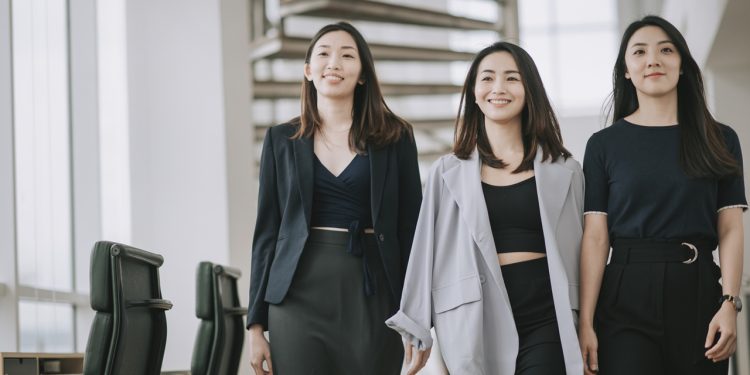Ten years is a long time …
Ten years is also just about one-eighth of the average life expectancy of a Singaporean woman, which stands at 85.7 years, according to World Bank statistics released in 2019.
So when I read the 10-year plan in the White Paper on Singapore Women’s Development, my heart was filled with joy. That’s quite a runway strip for women’s success to further take off on our island state.
While it is clear that women’s development in Singapore has made strides in Singapore, clearly placing us at the forefront of tackling gender-related issues in the Asia-Pacific region, we still have much catching up to do compared to many countries in the West.
In the realms of the gender pay gap, gender tokenism, motherhood, and fundamentals such as flexible working hours and telecommuting for returning mothers to the workforce – are just some of the very basics of employment law, as are the realities of a woman’s right to safety and protection in the office for her career and livelihood. Attention to these elements is long overdue in Singapore to keep us on par with the first world on women’s issues.
Employment, Education and Empowerment
As the old saying goes, it takes two to tango, and this has never been more the case with education and employment in the workplace for the fairer sex. The two go hand in hand on the road to women’s empowerment.
According to the Manpower Ministry, the employment rate for women aged 25 to 64 has grown over the past two decades and continued to grow from 73.2 per cent in 2020 to 75.1 per cent in 2021, despite the pandemic.
With that growth, we see how the education of Singaporean women has uplifted them.
“Should women be educated as much as men?” was the old question, and “we have had a shift in this perspective, and we are obviously doing better than other Asian countries,” said Professor Mathew Mathews from the Institute of Policy Studies at the NUS’ Lee Kuan Yew School of Public Policy.
“Women tend to have a harder time getting into the hard sciences like engineering to … the masculine environment versus more feminine careers. The west has a longer history of pushing for gender equality,” he said.
While the participation of women in the labour force has gone up, there is more we can do.
Healthcare Services Employees’ Union President K. Thanaletchimi believes that it takes a whole-of-society approach to ensure that women do not have to make hard choices and sacrifice to stay out of job, be a homemaker or put their careers on hold.
In short, our society requires a mindset shift regarding gender roles and workplace norms to get more women to join the workforce.
“Both men and women should share the load in raising kids, looking after family, breaking the traditional norms that exist even today. There must be more role models in this endeavour.
“Employers should not discriminate in hiring women, not giving opportunities for them to advance just because they are in their family way. We should provide flexibility at the workplace, flexi-place, flexi-time or flexi-work, including telecommuting. If we could do that during the pandemic, why not make this a norm? Flexibility will ensure that women do not have a break in career, and it offers an alternative for women to integrate both work and family,” she said.
An Aging Asia
The change in mindset would also prepare our nation for what is to come as our population ages.
According to the Asian Development Bank’s Aging Asia report, a projected 25 per cent of Singapore’s population will be over the age of 65 years in just eight years.
For many, caring for ageing parents can impact our time in the workplace. So, the numbers should only add up in cold hard facts of family support and one’s livelihood. Hence it has never been so critical as it is today to be a supportive Asian daughter of tomorrow or Asian son of today.
The white paper tackled the greying population issue well with improved care options, including basic elder- and child-minding services under the Household Service Schemes, plus a rise in the home caregiving grant from $200 a month to up to $400 per month.
I look forward to more being done in and of itself; the improvement merely scratches the surface given that eldercare costs are high if extensive medical, and mental health support for dementia patients, for example, and home nursing needs are required.
Junie Foo, the president of the Singapore Council of Women’s Organisations, stressed that as there are changing differentials in each of Singapore’s households and income, many caregivers in eldercare families do not fit into the typical cookie-cutter HDB eldercare demographics that have been assessed and may fall outside of the fray. This would be the case for women who have been widowed or own landed or private property.
“Women often fall through the gaps,” added June Foo.
Ultimately the end goal is to ensure older generations, at least on the healthcare side, “will see a drop in numbers needing to be institutionalised or go into nursing homes and hospitals and they can age gracefully.”
I’m not quite sure how Donna Summer’s song, “She Works Hard for Her Money,” came into my head while penning this op-ed. I can say that women, like men, work hard for their livelihoods. It’s an old tune with a never-ending refrain, and it should be a melody of mutual gender support that is key to the empowerment of women in Singapore and well beyond our shores.
This white paper makes the realities of empowering Singaporean women bold and stark. I’m glad to see the seeds of success have been planted and look forward to walking beside this Women’s Development white paper and Singaporean women’s full potential as they blossom over the next 10 years.

